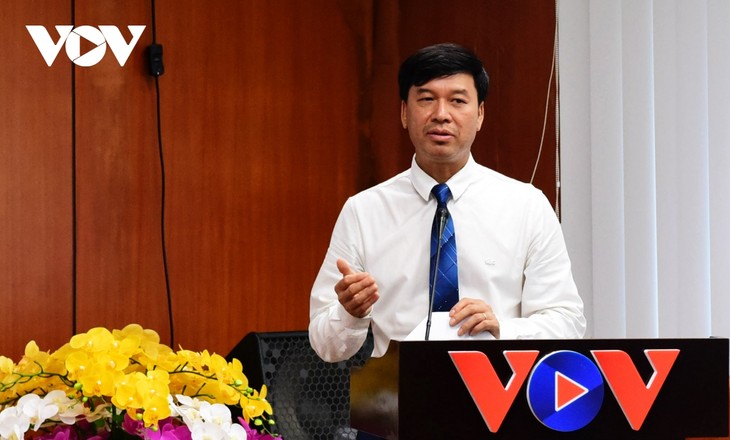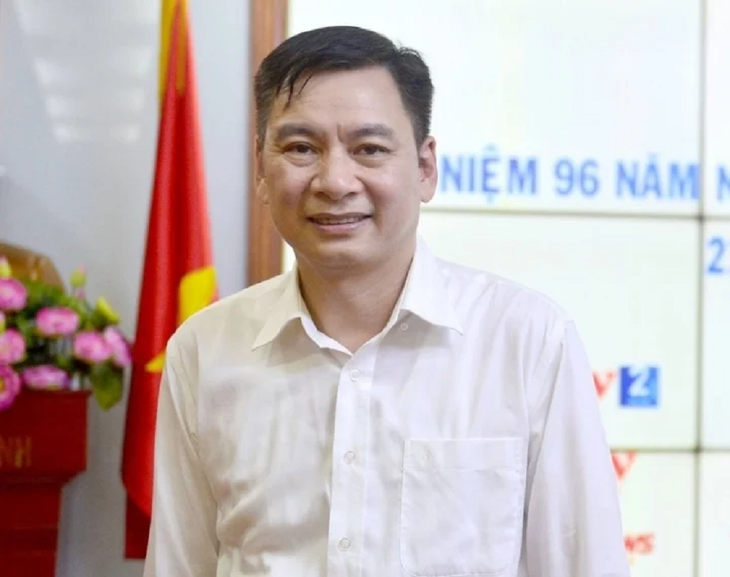(VOVWORLD) - June 21 marks the 99th anniversary of Vietnam Revolutionary Press Day. In the overall development of Vietnamese journalism, radio has been an important means of communication to reach people across the country and abroad. The strong development of different forms of journalism pose challenges to radio broadcasting, and at the same time motivates the nearly 80-year-old form of journalism to change to better meet the public's demand for information.
 Ngo Minh Hien, VOV’s Vice President Ngo Minh Hien, VOV’s Vice President |
Radio is a convenient mass media channel that quickly and effectively conveys information of social events and issues to the public, contributes to improving the general knowledge, and promoting social development. With many unique characteristics, radio still maintains a strong foothold despite many new means of communication.
Radio, a companion of many people
Radio remains a globally popular and uniform means of communication, able to reach disadvantaged, rural, and hard-to-reach areas. It remains one of the few low-cost and reliable sources of entertainment and information available in many parts of the world. In some areas, radio is the sole source of information. Radio gives everyone, regardless of their education or socio-economic status, opportunities to imagine, be entertained, and participate in public debate and discussions on the airwaves.
Dong Manh Hung, Vice President of VOV’s Journalists Association and Head of VOV’s Editorial Secretariat, said: “In Vietnam, radio is still a means of communication that can reach many people in the cities as well as those in remote areas, and far-off overseas listeners. Radio also has an educational function to spread laws, knowledge, and methods to the public to help them control their lives and do business. The Government has paid attention to radio broadcast and invested a lot in equipment to cover more than 90% of the country. Not every type of media in Vietnam can achieve such a large coverage.”
For nearly 80 years, since VOV’s first broadcast on September 7, 1945, radio has been a companion to generations of Vietnamese people.
Pham Xuan Hau of Nghe An province, who has been listening to VOV for more than 40 years, said: “I listen to the radio from 4:30 a.m. to 5:00 a.m. every day. I wake up and turn on the radio, and sometimes listen while working. When I was young, there was only one channel. Now VOV has many channels and programs of diverse and attractive content. Interaction between the station and the listeners makes me feel closer to VOV. The programs combine music, culture, entertainment, current affairs, science, and social information.”
Young listeners tune in to radio channels for accurate and quick updates of information. Nguyen Thi Tra Giang of Hoang Mai district, Ha Noi, said: “Radio uses spoken language. Radio broadcasters pay attention to that to make listeners feel closer and feel like they are seeing the events. They produce programs to make everything close to the public and easy to understand and to imagine. I often listen to VOV3 programs, which are very youth-oriented, especially the Letter Box. The broadcasters and listeners have lively and open interactions.”
 Dong Manh Hung, Vice President of VOV’s Journalists Association and Head of VOV’s Editorial Secretariat (photo: VOV) Dong Manh Hung, Vice President of VOV’s Journalists Association and Head of VOV’s Editorial Secretariat (photo: VOV) |
Overcoming challenges, breaking through to change
In the history of Vietnam’s radio sector, the public has witnessed continuous innovation of this traditional form of journalism. The quality of each radio program is renewed every day.
To radio transmissions, the Voice of Vietnam has added newspaper, online newspaper, and television channels. These 4 media platforms support each other and make the public the center and target audience.
VOV’s radio programs meet the needs of both domestic and overseas listeners. VOVWORLD, with 12 foreign language programs and a Vietnamese program for overseas Vietnamese, has continuously reached out to the world to be a bridge between Vietnam and international friends.
The rapid development of technology, especially digital transformation, has stoked a fierce communications competition. Ngo Minh Hien, VOV’s Vice President, said: “Reporters and broadcasters should try harder, have more creative ideas, and produce more informative programs for the listeners. We must innovate in the way we produce programs, and radio must become closer, more modern, and more interactive so listeners can receive information in the fastest, easiest-to-understand way. We are confident in the future of radio and the Voice of Vietnam. After 80 years of development, VOV will continue to be a bridge between the Party and the people and a trusted platform of the Party and the people.”